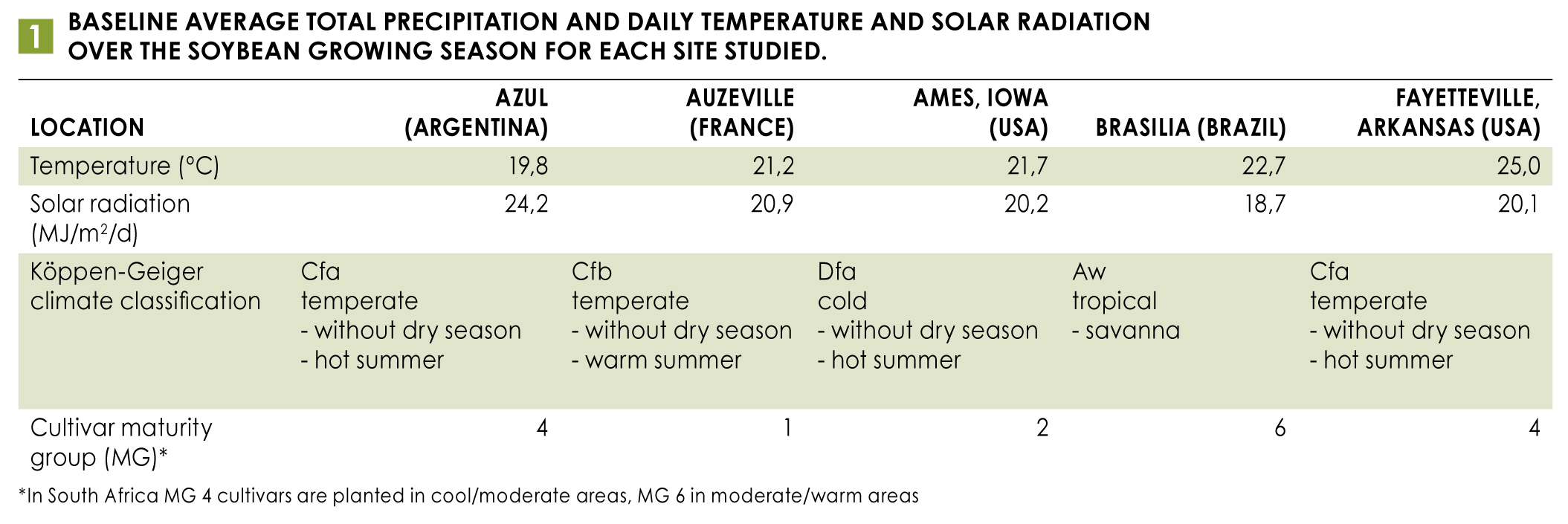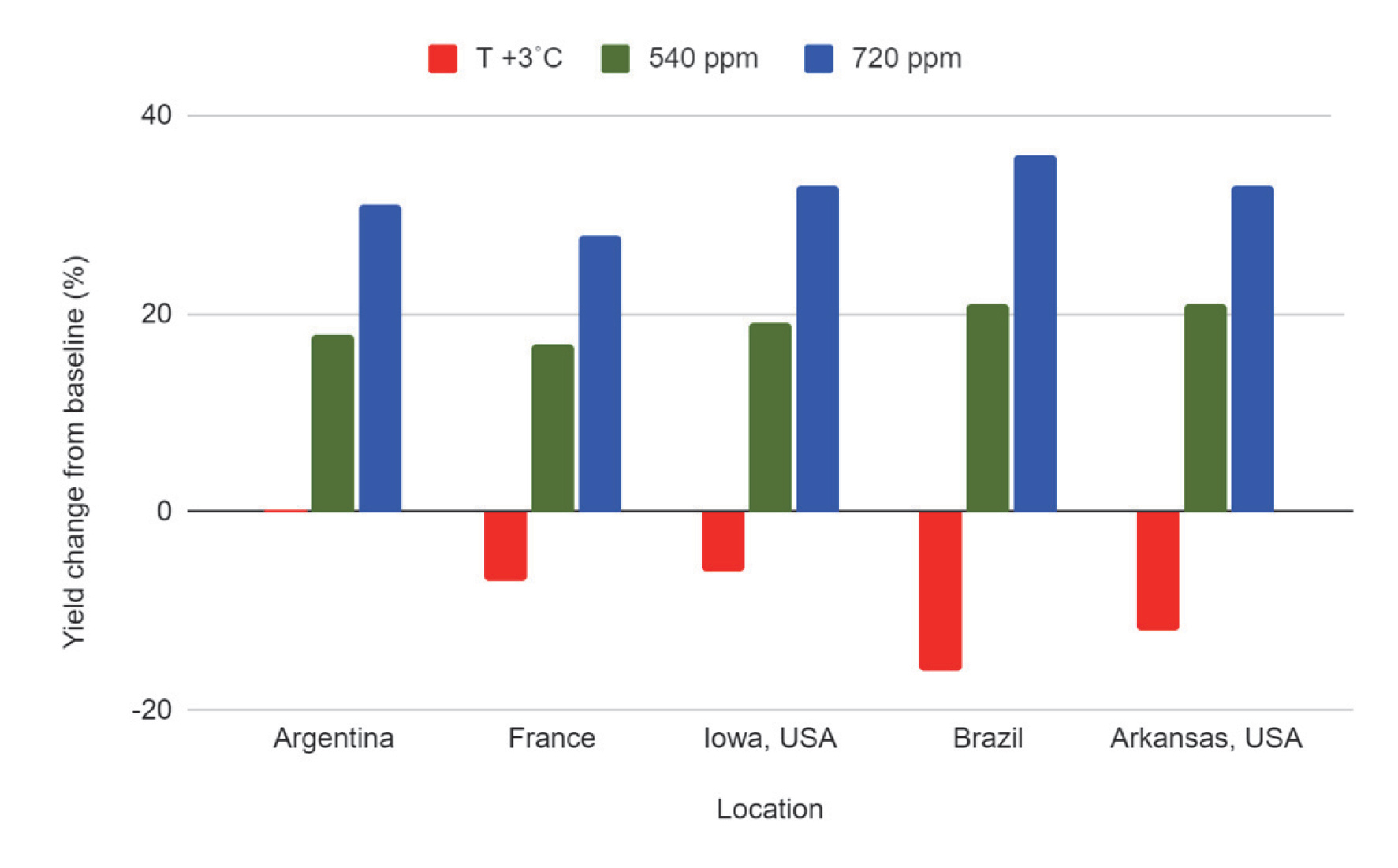
and Engineering and Department of Plant
and Soil Sciences,
University of Pretoria
Soybean is the most grown legume in the world and the fifth most widely cultivated food crop. Just over 300 million tons are produced annually, with 1,89 million tons produced in South Africa during the 2020/2021 season.
Recently, an international research team used ten different soybean crop models to assess the potential impact of future elevated temperature and CO2 concentrations on yield. Five sites were selected across the globe, including the USA (two locations: Arkansas and Iowa), Argentina, Brazil, and France, based on varying conditions and availability of high-quality historical data for model calibration (Table 1). The first three countries are the biggest producers, accounting for 80% of total soybean production.
 Key findings
Key findings
Yield decreases of 16% for Brazil, 12% for Arkansas, 7% for France, and 6% for Iowa were predicted in response to a +3˚C increase in temperature (Graph 1). In Argentina, the coolest location studied, yield was estimated to decrease by only 0,2%. Large yield decreases were estimated for a +9˚C increase in temperature: for example, a 29% decrease for Argentina and a 49% decrease for Brazil. Average yield reductions of up to 5% for every 1˚C increase in temperature were estimated.

The length of growing season was generally predicted to decrease due to faster development, but for some models growing season duration decreased for +3˚C and/or +6˚C, and increased again for the most extreme temperature increase of +9˚C. While the optimum temperature for soybean growth and photosynthesis is 25˚C to 30˚C, average daily temperatures above 30˚C slow down pod-set, seed development and crop maturation, all of which influence yield negatively.
Increased CO2 concentrations led to a positive yield response from soybeans. Together the models estimated a 17% to a 23% yield increase at 540 parts per million (ppm) across all the sites. A doubling of carbon dioxide to 720 ppm was estimated to result in an average yield increase of 36%. Increased yields at a CO2 concentration of 540 ppm compared to 360 ppm were greater for locations with a higher growing season temperature.
Outlook for South Africa
Climate change will pose challenges to soybean production in South Africa, and breeding cultivars with essential stress tolerance traits will be important. Warmer regions are predicted to benefit more from increased CO2, but are also at higher risk of temperatures that negatively affect growth and development. Drought effects will constrain benefits from CO2 fertilisation, and negative climate impacts are expected to be more pronounced in commercial crops already growing close to their full genetic potential.
Breeding programmes that include global collaboration to achieve important genetic improvements for adaptation, will be key. Collecting data on cultivar performance and growth conditions (soil, weather, pests and diseases, management practices) in a centralised, producer-controlled data platform can help harness big data insights into optimal adaptation strategies.
 Resource
Resource
Kothari, K et al. 2022. Are soybean models ready for climate change food impact assessments? European Journal of Agronomy, 1, 135:126482.





























